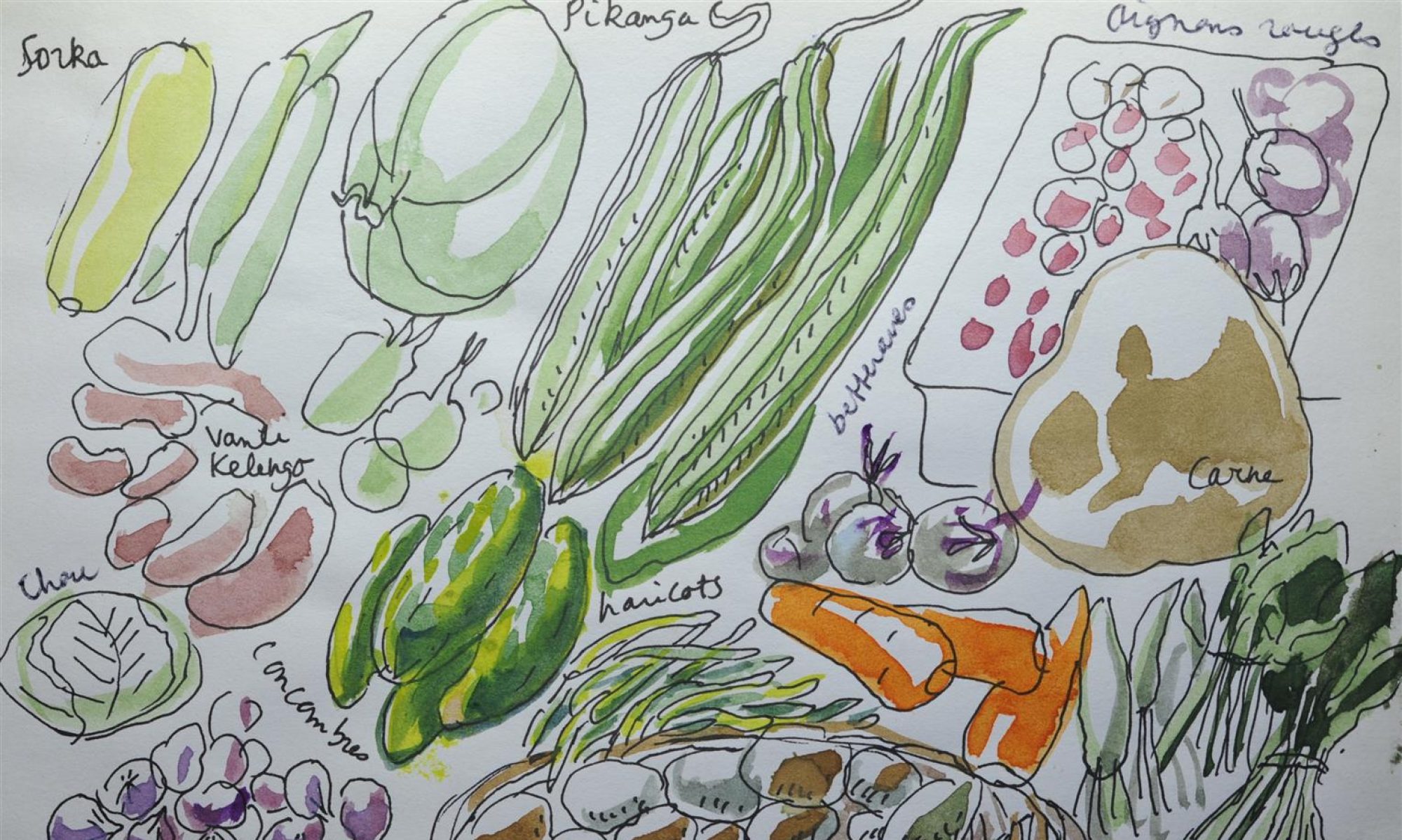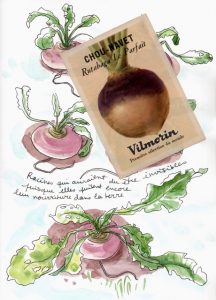While turnips have not always had a good reputation among gourmets, they have often stolen the show from other winter vegetables in children’s fairytales. Do you know, for example, the story of the giant turnip – a turnip so monstrous – that it became impossible to uproot!
No matter how hard it was, including even the farm animals, which came to the gardeners’ rescue, nothing helped, until they all fell backwards. Finally they all ended up with a delicious soup with the giant turnip. This Tolstoi tale, in memory of his childhood on the banks of the Volga, continues to make people laugh in the datchas. In France, it is the tale of “the good friends” of François Paul, writing for Père Castor’s famous collection of children books, which evokes the solidarity which links farm animals with each other. In the depths of winter, they brave the inclement weather to successively offer each other a good turnip, found by surprise in the snow.
Thus, the culture of the turnip fed the populations as well as the animals until the eighteenth century, to be then dethroned by the potatoes and the beans. And it was not until 1880 that the root vegetable reappeared with less voluminous foliage and, above all, as a delicious early vegetable.
Turnips appreciate light, cool and enriched soils. Their cultivation is easy, but one should be careful because it does not undergo stress from the lack of water, or excessive heat. If you don’t water them sufficiently, the roots become fibrous, and sometimes bitter.
The turnip comes from the large Brassicaceae vegetable family which includes cabbage, cauliflower, brussels sprouts, and radish. In Quebec, the turnip is still called “Siam cabbage” because of its Asian origins or “rutabaga” which means “turnip cabbage”. Thanks to a friend, descendant of the well-known family of horticulturalists, I was able to find here an image from the Vilmorin catalog showing in 1925 up to 34 varieties of turnips.
Indeed, like all very old plants, the species has produced many varieties. But the prize for the regions probably goes to the Ile de France. The best known varieties are: the “turnip of Croissy”, “the turnip of virtues”, the “turnip Marteau”, or the “turnip of Montesson”. These first two are part of the early in the season turnips. While late varieties, like the globe white turnip with a purple collar, that I drew here in slush snow, this kind of turnip can stay in winter in the ground, even when it is frozen. Other varieties are harvested in autumn, such as the Nancy turnip or the golden ball turnip.
As for the cooking, in the last century there were still many recipes for turnips in books, simply cooked or as an accompaniment to meat, such as the famous duck with turnips. Now, the new glazed turnips are more popular, as is the French “consommé” of fresh turnip tops, or fresh in salads for the English.
Finally, whatever the season, turnips are grown happily, like good friends.
Raphaèle Bernard-Bacot

